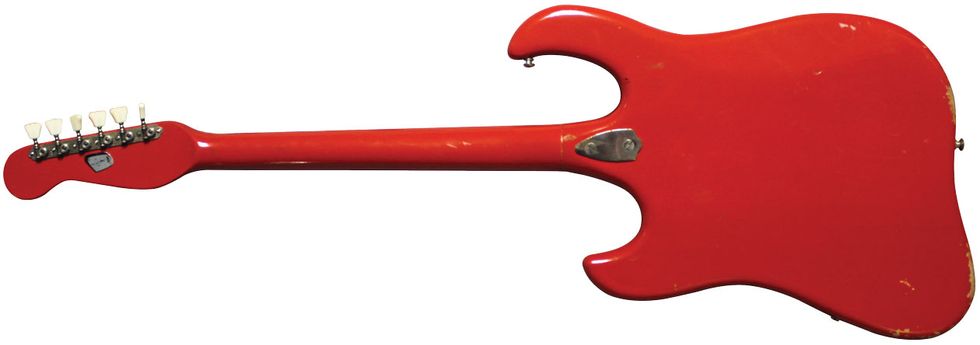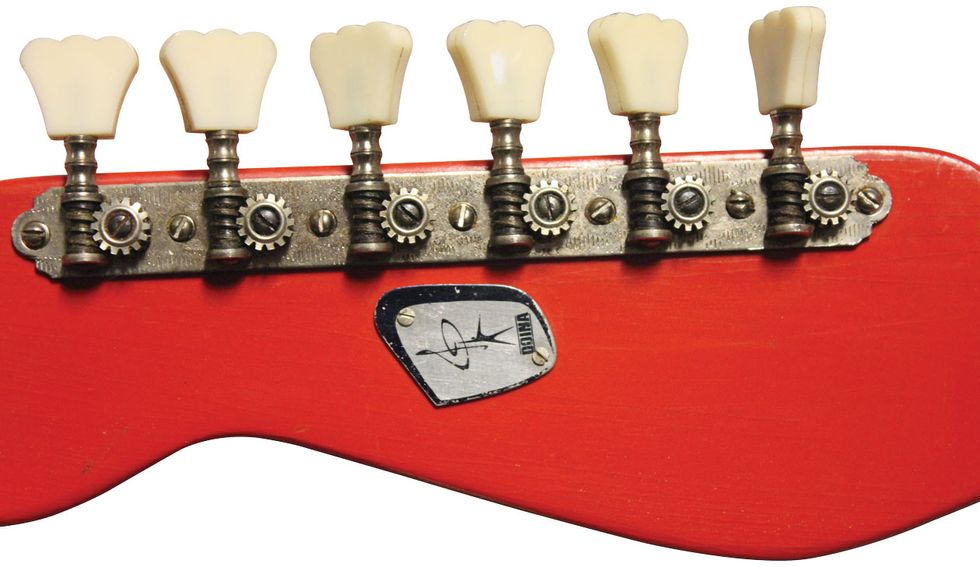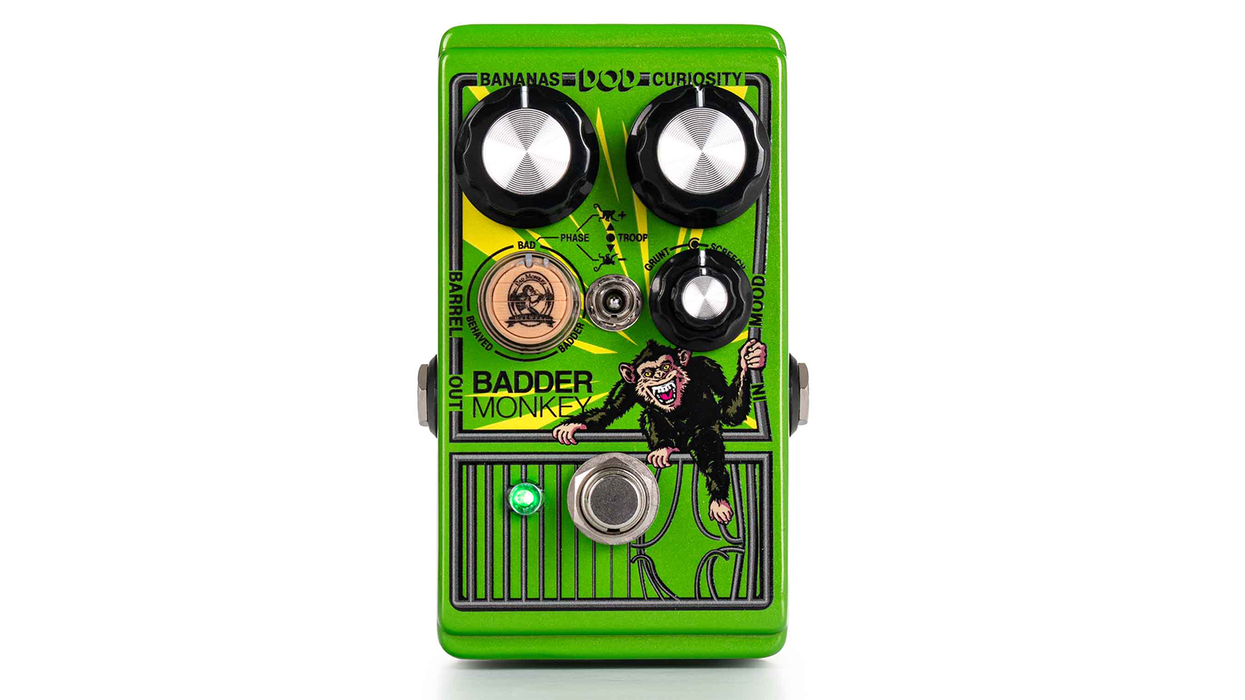I was recently watching a documentary about Vlad the Impaler, the infamous Romanian ruler, national hero, and the inspiration for Bram Stoker’s Dracula. After watching the show on Vlad Dracula, as he was also known, I got to thinking about Romania and, of course, Romanian guitars! So, this month I present to you my only Romanian guitar: a lovely blood-red Doina Seranada, which I’m assuming was built in the early 1970s. I suppose it’s like a Vlad signature model, but with a much more pleasant, airy name.
Romanian guitar history follows a similar arc to that of other former communist countries of Europe. After World War II, there were a few factories in each of these communist states that made guitars “for the people.” In Romania, there were two main producers of musical instruments: Doina in Bucharest and the Hora factory in Reghin. Hora still produces stringed instruments to this day, but the Doina factory appears to have been active from the 1930s until its closing in the early ’80s.
Typical of the region and era, guitar design was very interesting. When you study the electric guitars from both factories, you quickly notice that Hora guitars tended to be inspired by American guitars like the Fender Telecaster. The few electrics made at the Doina factory, however, tended to be much crazier aesthetically and influenced by Italian and Japanese guitars of the ’60s. I often see lots of sparkle, plastic, and exaggerated shapes. Who knows? Maybe the horns on the Seranada were inspired by the elongated mustache of Vlad, but with a healthy serving of sparkle, of course.
The Seranada appealed to my senses right away because of the unbalanced horns on the body, the offset shape, and the white-sparkle pickguard. It’s just something you don’t see every day. Researching this guitar was akin to a musical-design blender of ideas and influences. The sideline neck dots remind me of Japanese guitars made at the Matsumoku factory in the 1960s.
The simple but popular “clamshell” tremolo on the Seranada has been seen on many different guitars, from Japan-made Kawais to U.S.-made Kays. The lovely, plastic slab pickguard is reminiscent of Italian Eko guitars, and the pickup reminds me of those found on old U.S. Multivox guitars or something made by DeArmond in the 1950s. Lastly, how about its hardwired instrument cable? That’s got to be a first for me, and makes me wonder if this was a student model sold with an amp-in-case type package.
Guitar influences during the communist era can be really widespread. Since Western music and guitars were pretty much shunned, the guitar makers were left to use what they had on hand and to make educated guesses in many instances. Seemingly, simple details like scale length, pickup design, instrument balance, and wood choices were often left to folks who were formerly building radio transmission towers or crafting school desks. At first feel, these communist-era guitars can feel a bit clunky and heavy-handed. However, this Seranada is a nice guitar with a totally cool vintage sound. The low-output pickup blends wonderfully with an aggressive, clean boost or heavy overdrive, with a bit of midrange thrown into the mix. The electronics are well-done and simple, and lack the heavy filtering often found in Russian guitars. The fretwork is also quite nice and comparable to Kay guitars from back in the day.
Heck, if you were able to lengthen the cord, you might even be able to bounce around onstage and impale the bassist in your band—in the name of Vlad of course.
See and hear this unique, Romania-built Doina Seranada demoed by Mike Dugan.




![Rig Rundown: Russian Circles’ Mike Sullivan [2025]](https://www.premierguitar.com/media-library/youtube.jpg?id=62303631&width=1245&height=700&quality=70&coordinates=0%2C0%2C0%2C0)













